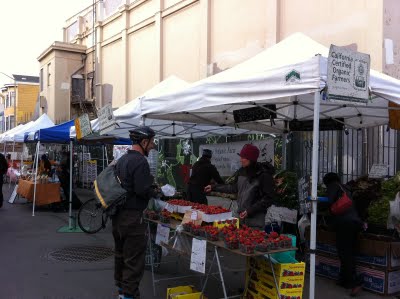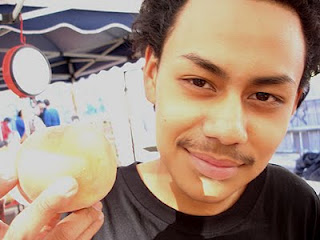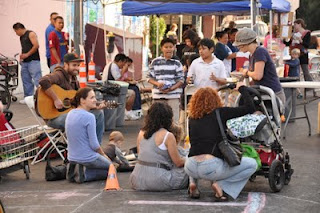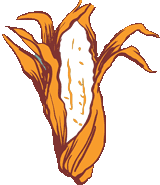The MCM returns April 14! Until then, read these stories to hear more about the vendors, volunteers and your neighbors. Here’s a Valentine’s story from the Yerenas, beloved farmers at the MCM.

Poli Yerena was age 22 when he first met Silvia who was 14 years old at the time. At first they just knew each other and would write letters. Two years went by when Silvia didn’t hear from him. She was sitting in the plaza of Jocotepec with a girlfriend one day, who asked her “Whatever happened to that muchacho who would write to you?” Silvia shrugged, “I never heard from him again.” She remembers this conversation, because that same day Silvia reencountered Poli. He was visiting from Watsonville to see his family in the next town of San Juan Cosala. It was 1974, and this time Poli did not stop writing. He courted Silvia by visiting her up to three times in a year for the following ten years. He was in love. “I had to wait ten years before I could steal her away!” Silvia remarks, “Sometimes we would even forget each other’s faces!” They finally married in 1985 in Jocotepec, and this time Poli took his bride back to Watsonville.Jocotepec and San Juan Cosala are two of the towns on Lake Chapala, Mexico’s largest lake. It is a beautiful region of mountains and serene water with a preserved pueblo culture known for its traditional cultivation of blackberries, a pink corn variety, and loads of other agricultural products that you can buy right off the farmers’ trucks in the town. A longtime weekend getaway for people from Guadalajara, Lake Chapala has steadily become home to a growing population of Mexican, Canadian, and American retirees, who love the scenery and the small-town groove of nearby Ajíjic.
Lake Chapala is also the site of growing investment from the Driscoll’s company, one of the largest suppliers of berries, including organic berries, in the U.S. and abroad. I ask Poli when he estimates that Driscoll’s began farming in Chapala, and he believes it was after the North American Free Trade Agreement (NAFTA) went into effect in 1994. In recent years, the lake region came under urgent environmental action due to the alarming levels of water depletion. Water levels miraculously recovered, but solving pollution problems caused by agricultural practices in the region remains an ongoing project for activists.
Poli began working as a strawberry picker for Driscoll’s in Watsonville, California in 1967. “My father was a crop picker under the Bracero Program. He began working here in 1956. During the Vietnam War, work opened up, and my father called for me to join him. …. Back then, it was not a problem to arrange your residency papers. Within three months, I was a resident.” Over the next years, other family members trickled over, including his mother and two sisters. Poli wistfully mentions, “The Yerena name has all but vanished from my pueblo.”
The Yerena’s family history curiously weaves through geographic coincidences and critical political junctures. Working in Watsonville, the Yerenas benefited from the remarkable achievements of the movement generated by César Chávez, Dolores Huerta, and the National Farm Workers Association (now known as the UFW). Poli explains, “Driscoll’s took notice of the protests of the César Chávez movement, and made arrangements to appease the union by providing land for share cropping. They gave out 2.5 acres per family of 4 or 5 people.”
Suddenly and unexpectedly, the Yerena family found themselves working the land as proprietors. “On our own, we began to learn about how to prepare the land, about chemicals and fertilizers, about growing, and the seasons and timing for planting. … We had to overcome financial obstacles, since the banks would not give out loans to Hispanics back then. We were able to get a $12,000 loan backed by the house my father bought (worth $29,000). We rented additional land. When the packaging companies got to know us, then we began getting some credit from them too, so we could become their suppliers. … Even today, as small growers, we don’t earn best from wholesaling. We survive because of the Farmer’s Markets, at the point of sale between consumer and farmer. Not everyone is aware of the effort that goes into bringing the product here.” Poli continues, “We also had cultural barriers to overcome, not just to learn English, but to adapt our small town manners. I come from a culture were social hierarchy was very important. Here, I am expected to speak, and what I say is taken as valid. I can now walk in anywhere and feel I belong there.” Today, Poli sits on the Board of the Ferry Building Farmer’s Market. “Observing and learning,” he says with wit and a short smile.
The young Silvia and Poli who met in the small town square of Jocotepec have become wisened Californian farmers, with a deadpan humor that I know so well from my own family of rancheros from Jalisco, but which seems to come natural to farmers anywhere. They continue to learn and adapt, sometimes by rediscovering innovation in tradition. Influenced by their Farmer’s Market customers, the Yerena family adopted traditional agricultural practices. Their farm has been selling certified organic strawberries, raspberries, blackberries, squash, and squash blossoms for more than two decades, and as of last year, also yacón – a crisp sweet tuberous root.
I ask Silvia to tell me more about love and work on the farm through the decades. She shares her view on nurturing family: “When you fall in love, it is for life. Love is sacrifice also. All of this reflects on family. If the couple lives well, then their children will also.” The Yerenas have four children. One son is an agronomist, another is a chef, they have a daughter in college, and a son in high school. They also have two grandchildren. Poli contemplates life on the farm, “One grows old into this work and survives. One works the sierra, because one likes it … To be out there ten, sixteen hours … We are a different breed. Not everyone is made for this work. If it is cold, we go out to work. If it rains, we go. But it is all a satisfaction when we see our client.” Poli stops, then beams, “Our grandsons are now scratching the earth with their nails just like us.”
Today, Valentine’s Day, when industrial commerce demands the immediate purchase of all things gaudy and red, I instead invite us to wander out with our imaginations to the Yerena’s strawberry fields. The seedlings are well rooted in the soil, and have sprung blossoms. In a natural process of growth, they wait for warmer weather to deliver their plump berries. These little plants are being nurtured by a family of four generations of farmers, who embody the spirit of adaptation to new land and new cultures of behavior. I believe we can learn from this. Theirs is a love story about people carefully tending land and each other. Growing in patience makes good things happen. By supporting small farmers, we give people and the planet a little bit of love. I wait for their craft to bear fragrant berries in the Spring.
For now, please enjoy the plum blossoms in the City, and wish Silvia a happy birthday (un féliz cumpleaños) today on February 14th.
See you back at the Mission Community Market in April, with strawberries!







